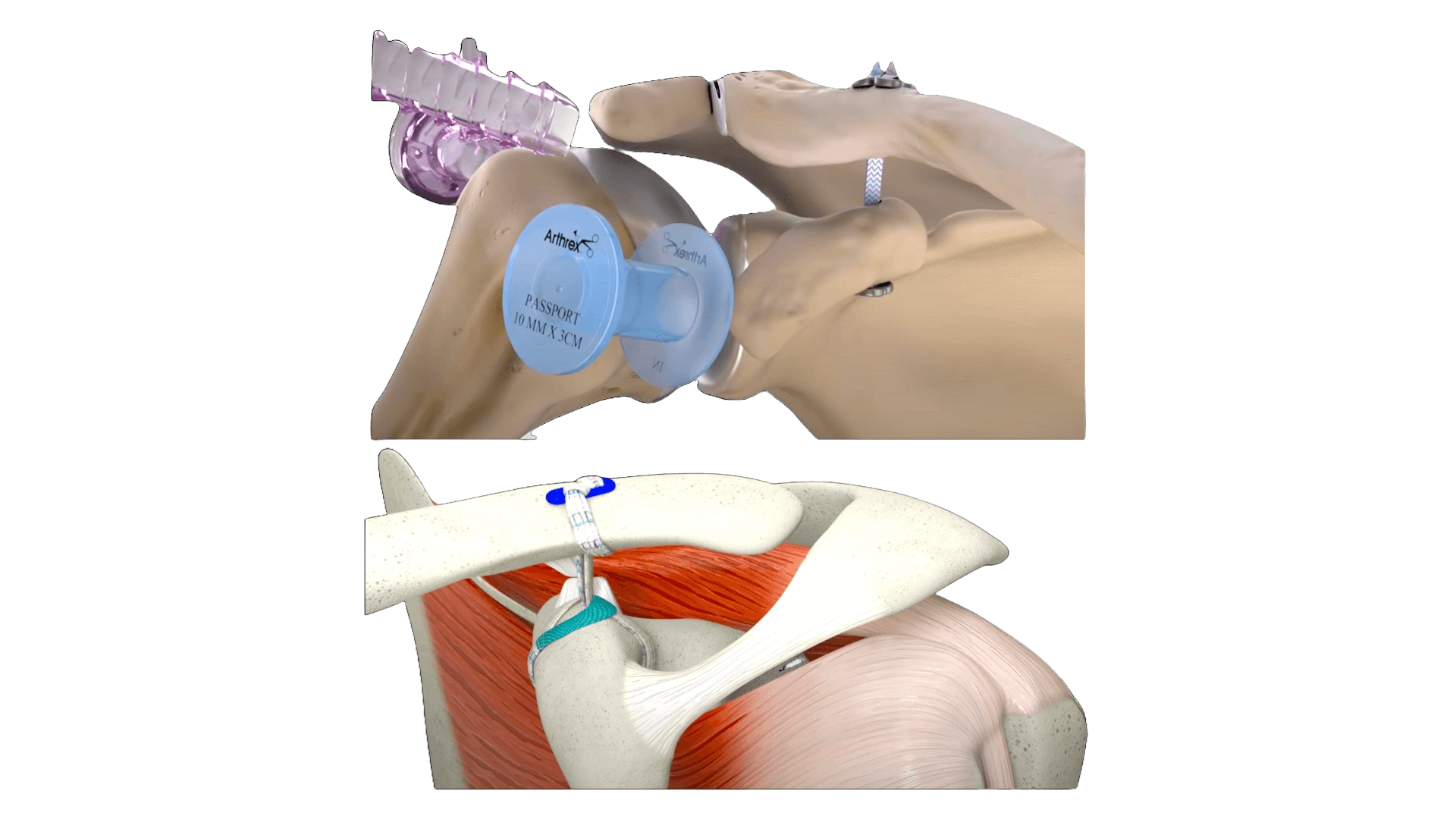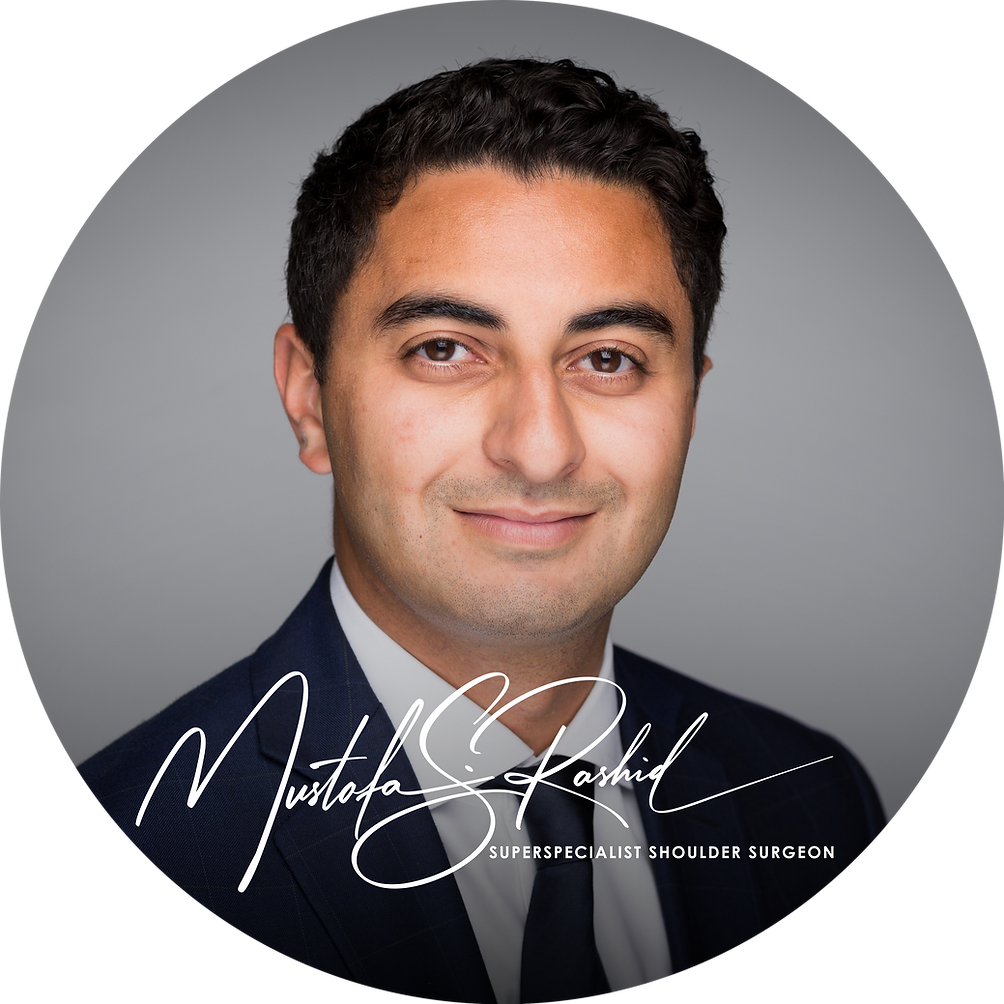AC Joint Stabilisation Surgery

Overview
Separations or dislocations of the AC joint are very common. Dr. Rashid offers patients with a high grade injury, the ability to rehab initially, and then have surgery later if the symptoms or limitations persist. This later surgery, is often done with a strong synthetic ligament to reconstruct the joint stability. Alternatively, some patients may choose to undergo early repair. This is done by Dr. Rashid in patients who are less than 2 weeks from their injury, and using keyhole surgery techniques to repair the torn ligaments. Both options are reasonable to consider, but it is recommended that you book a detailed consultation with Dr. Rashid to better understand your choices.
Indications for Surgery
Most patients can compensate with AC joint separations / dislocations. Even with high grade injuries, patients may choose to try rehab first with physiotherapy guidance. Patients struggling with pain and lack of strength in lifting the arm forward may choose to have surgery to stabilise the joint.
Pre-Surgery Tests and Assessment
Before any surgery to the AC joint, a variety of assessments and tests, such as X-rays, and occasionally a MRI scan are performed. Dr. Rashid will assess how unstable your joint is, what structures are injured, and the severity of the injury carefully. Input from your physiotherapist is helpful if you have tried to rehabilitate prior to surgery.
Procedure Details
Surgery for ACJ dislocations comes in two forms: for injuries that are treated surgically within 2 weeks, a keyhole technique is preferred. For patients having surgery more than 3 weeks from their injury, a reconstruction using an ultrastrone synthetic ligament technique is preferred by Dr. Rashid. Both techniques are performed under general anaesthesia. Under general anaesthesia, you will be positioned sat up and your arm will be placed in a special arm holder. After sterilising the skin with a cleaning solution, a keyhole camera is inserted into your shoulder. The coracoid bone is located and a guide is inserted under it.
A 2.4mm drill is then used to make a hole to pass ultrastrong sutures through the collarbone and the coracoid, which is part of the shoulder blade. Two titanium buttons are placed, one under the coracoid, and one above the collarbone to support the sutures.
For the reconstruction technique with synthetic ligament. An incision at the front of the shoulder is made and the coracoid is exposed. A synthetic ligament with a loop at one end is passed around the coracoid and the ends are passed through the loop. A 3.5mm drill is used to make a hole in the collarbone and the ligament is passed through this. A titanium button is then placed over the hole in the collarbone and the ligament is tied over it. The skin incision is closed with stitches that are absorbable and buried under the skin. Dressings and a sling are then applied.
Risks and Complications
The risks of AC joint stabilisation surgery are not common. These include infection, stiffness, residual deformity (lump), pain, and nerve injury (very rare). Dr. Rashid has carefully trained over many years to perform this operation and can do so safely and effectively.
Recovery and Rehabilitation
Recovery following this type of surgery depends on which technique is used. Dr. Rashid will provide you and your physiotherapist with a protocol that involves when you can discard your sling (usually after a few weeks), and when to commence certain movements. Physiotherapy is helpful to ensure you regain your motion, function, and strength of the shoulder. Pain relief is often appreciated in the first month.
Expected Outcomes
Most people will be in a sling for a few weeks and therefore driving is not advised during this time. After that phase, rehabilitation will include phased return to full motion, activity, and strength. Most people can return to work after 2 weeks if they do not have a physically demanding job. Most people can return to manual work and sports between 3 and 6 months after surgery. The success rates of this surgery are typically greater than 90%.
About the Author

Mustafa Rashid
Dr. Mustafa Rashid is an award-winning, well published superspecialised surgeon from the UK, specialising in shoulders
